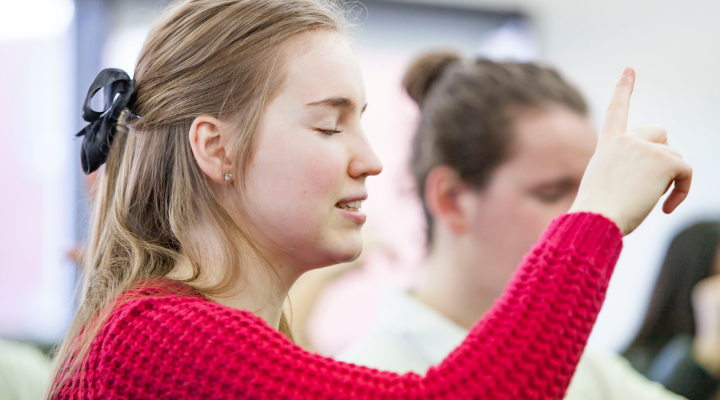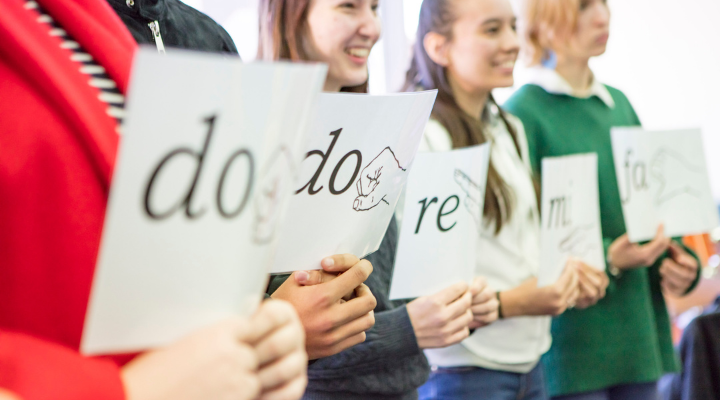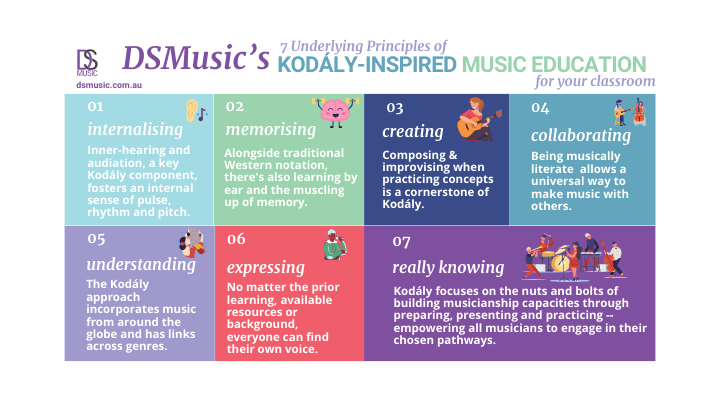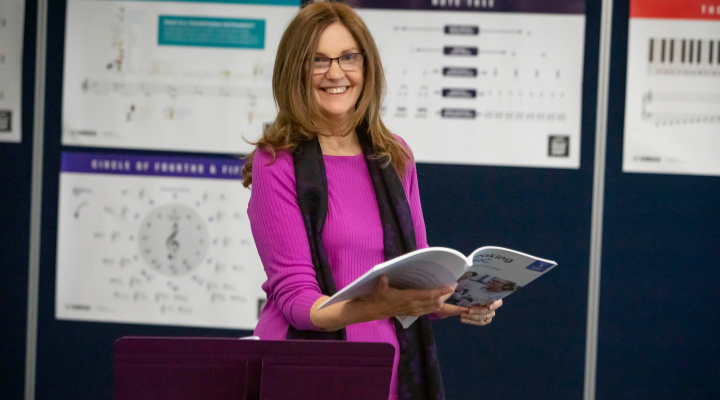Zoltan Kodály said...
We should read music in the same way that an educated adult will read a book...
...in silence but imagining the sound.

This philosophy, and the teaching method itself, was inspired by Zoltan Kodály, a Hungarian composer.
Kodály believed deeply in music education being available to everyone and sought to improve the quality of this in his home nation and beyond.
He drew on established components of best teaching practice to create the method, including rhythm names, Solfège and related handsigns.
Over time, others built on the method, and a developmental, sequential and cumulative Kodály-inspired teaching method was born.
It’s not just for little kids or fans of Sound of Music, either!
This approach is inclusive and accessible because it’s singing-based - no special equipment required - and it’s designed around learning that is rigorous, creative and engaging.

The tools of Kodály -inspired teaching
- Ways to spell notes, including tonic solfa, letter names, tonal or diatonic names & rhythm names
- Inner hearing/audiation and immersive listening
- Games/movement, Handsigns & Conducting
- Composing & Memorising
Using this underpinning, my goal as a music teacher is to help students become musically literate in the same way as a language teacher helps their students become literate in the language they are being taught.
But what does this mean?
Music Literacy is the ability to hear/listen, speak/sing/play/perform, read and write with understanding! Or, to be able to see what you hear (as if it were written on a score) and to be able to hear what you see (hear the notes you see on a staff).

It’s all about the Three P’s!
Kodály drew on existing teaching best practice, so the approach actually aligns well with good pedagogy regardless of the subject.
In music, by using the ‘Three P’s, we make sure students really know (prepare), before we’re explicit in naming it (present) and then we reinforce to build musical independence (practice).
Deb's here to help!
I’m passionate about supporting teachers in their classrooms and giving them the tools to create musically literate young musicians.
I’ve taught in schools for years, led music departments and authored a series of curriculum resources and assessment materials.
I’ve been active in the Victorian Kodály scene for a long time as contributor to training course material and lecturer because I believe in this approach to music education.
Ultimately, I love creating new resources and helping teachers, so if you’re interested, get in touch for a chat.


